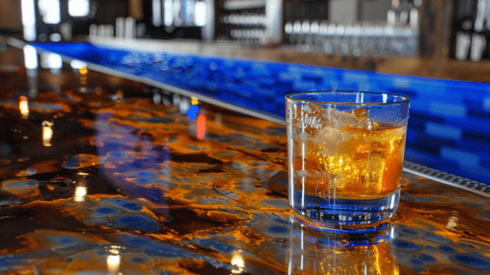Liquor Liability: Captive Insurance for Sustainable Coverage in SC

Jordan Paszek , Pinnacle Actuarial Resources, Inc. | February 23, 2024

The following comes to us from consulting actuary Jordan R. Paszek of Pinnacle Actuarial Resources and is republished with permission. Mr. Paszek can be reached at [email protected].
Rising liquor liability insurance premiums1 have been forcing multiple bars and concert venues to close in the state of South Carolina.
Liquor liability insurance has been a compulsory coverage in the state of South Carolina since 2017, with a minimum coverage limit of $1 million per occurrence and $2 million in aggregate. Not specific to bars and concert venues, examples of other required commercial insurance products include auto insurance, workers compensation insurance, and professional liability insurance.
While mandatory insurance requirements are not uncommon, they can vary by jurisdiction, as they are often established to address specific risks and promote public welfare. However, in certain situations, meeting the requirements of mandatory insurance becomes unaffordable, creating significant strains on profitability and potentially leading to a business's inability to remain open.
In South Carolina, the requirement for liquor liability insurance has presented a significant affordability challenge. Claims payments have increased and, as a byproduct, so have premiums. In fact, many insurers have stopped offering liquor liability coverage altogether, reducing competition and further exacerbating the challenges of finding affordable coverage.
How can the insurance market fill this void?
Alternative insurance options, such as captive insurance companies, make a compelling case. Given the low-frequency and high-severity nature of liquor liability coverage, there is the potential to insure the risk through a single-parent captive as part of a broader set of captive insurance policies. The presence of additional coverages, specifically with higher frequency or lower severity, would help achieve risk distribution that likely would not be present if liquor liability was insured on a stand-alone basis. Other ways to improve risk distribution would be through a group captive or pooling arrangement. Aside from risk distribution, captives often foster a stronger focus on risk management, which can result in better risk control and loss prevention measures. This can lead to lower premium costs or other financial benefits as the parent company can retain underwriting profits and accumulate surplus.
However, establishing a captive requires a significant initial investment and capitalization. Consideration must also be given to risk concentration and lack of diversification, which could lead to volatility in its financial results. Beyond the captive insurance realm, excess and surplus (E&S) insurers may prove viable in their willingness to write the risk if there is an availability shortfall in the traditional market. Insuring through E&S insurers typically involves lower initial costs compared to establishing a captive insurance company; however, the E&S route may not solve the issue of premium affordability, given that their willingness to insure higher-risk exposures comes at a cost.
Utilization of captive insurance companies has significantly increased over the years. In fact, South Carolina has one of the largest captive insurance markets in the United States and could certainly leverage this challenge into an opportunity to maintain its thriving entertainment industry.
1. A recent report from the South Carolina Department of Insurance titled Status Report on the South Carolina Commercial Liability Insurance Market found that the liquor liability subline is experiencing significant underwriting losses in the state, with combined ratios ranging from 190 percent to 360 percent.
Jordan Paszek , Pinnacle Actuarial Resources, Inc. | February 23, 2024
